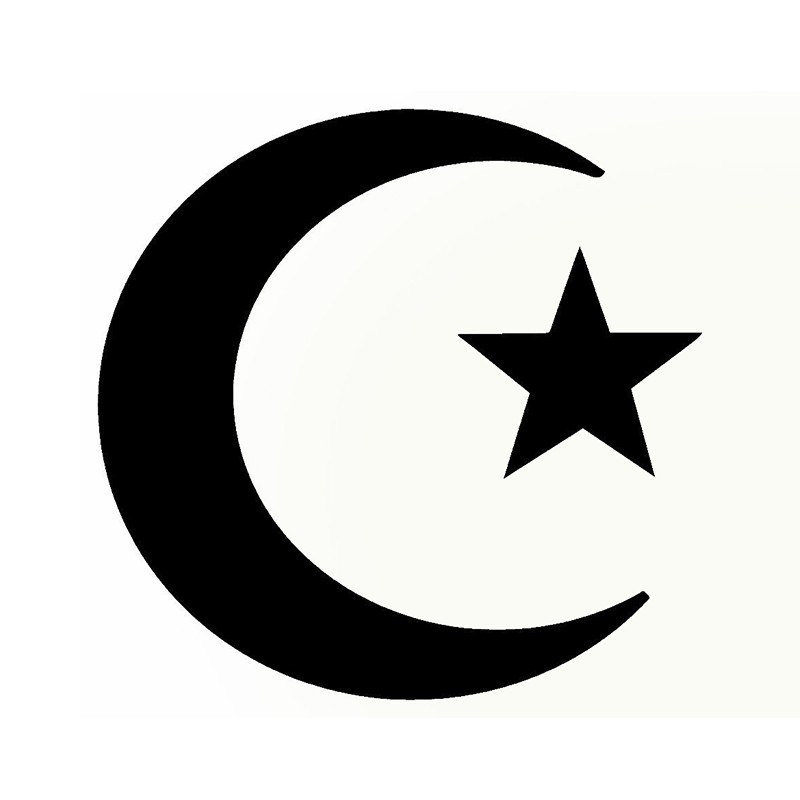
Sunni Islam : Sunnism represents the primary tradition of Islam as defined by the Quran and Hadith. It found expression in four legal schools-Hanafi, Malekite, Sghai’ite, and Hanbalite.
Hanbalite (Saudi Arabia): A legal school within the larger Sunnni Islam community, the Hanbalite school looks to the work of Ahmad ibn Hanbal (d.855). It is considered the most conservative of the four legal schools and has become the dominant form of Islam in Saudi Arabia.
Malekite (North and West Africa): A legal school within the larger Sunnni Islam community, the Malekite school looks to the work of Malik ibn Anas (c.708-795). It is the dominant form of Islam across North Africa west of Egypt.
Shafi’ite (S. Asia from India to Indonesia): A legal school within the larger Sunnni Islam community, the Shafi’ite school looks to the work of Muhammad ibn Idris al-Shafi (767-820). It is the dominat form of Islam in East Afrtica, southern India, Malaysia, and Indonesia, the most populous Muslim country.
Hanafi (Lands of the former Caliphate from India to Egypt and Bosnia): A legal school within the larger Sunnni Islam community, the Hanafi school looks to the work of Abu Hanafi (d.767). His approach dominated throughout the old Muslim empire (the Caliohate) based in the Middle East. It is the largest of the Sunni schools in terms of the number of adherents, and considered the most liberal of the several Sunni schools. It remains the dominant form of Islam from Egypt to India and from Bosnia to northeast Africa.
Chishti Sufi Order: The Chishti Sufi Order was founded in India by Muin al-Din Chishti (d.1236).
Qadiri Sufi Order: The Qadiri Sufi Order was founded by the students of Abd al-Qadir al-Julani (1077-1166) a Hanbalite jurist.
Melvani Sufi Order: The Mevlevi Sufi Order was founded in what today is Turkey by Jalal al-Din Rumi (1207-1273).
Shadhili Sufi Order: The Shadhili Sufi Order, which exists in a number of loosely associated branches, looks to Abu al-Hasan Ali al-Shadhili (d.1258) as its founder.
Nimatulah Orderof Sufis: The Nimatuh Order of Sufis look to Nur addin M. Nimsatullah (1330-1431) as their founder.
Tijaniyya Sufi Order: Tijaniyya Sufi Order was founded by Ahmad b. Muhamad as-Tijani (1737-1815) around 1784 in Algeria.
Wahabbism: A reform movement based on the teachings of Muhammad ibn Abd al-Wahhab (d.1792), whose approach aligned closely with the Hanbalite School of Sunni Islam and opposed both Shi’a and Hanafi emphases. It has been most influential in Saudi Arabia and played a role in Arabia’s separation from the Hanafi-dominated Caliphate.
Salafism: A reform movement begun in Egypt by Jamal al-Din al-Afghani (d.1897) and Muhammad Abduh (d.1905) which looked to a conservative and literal reading of the Quran.
Ahmadiyyas: A revival movement begun in what is today Pakistan by Mirza Ghulam Ahmad (c.1825-1908). The movement divided in 1914 among those who came to be see Ahmad as a prophet and those who saw him as a religious leader sent by Allah to renew the community but rejected the designation of him as a prophet (and thus the equal of Muhammad. Much of the Sunni community has moved against the Ahmadiyyas as heretics.
Muslim Brotherhood: A revivalist movement founded in Egypt by Hasan al-Banna (1909-1949). It developed a broad program of charity works while also becoming politically involved in opposition to Western influence in Muslim lands. It was the ultimate source of a variety of radical groups across the Muslim world, including al-Qaeda (also spelled as al-Qaida). Hamas is the Palestinian affiliate of the Muslim Brotherhood.
Sufi Order: The Sufi Order International was founded by Pir Hazrat Inayat Khan (1882-1927) a member of the Chishti Sufi Order who worked in Europe and North America beginning in the second decade of the twentieth century. He originally left the order in the hands of a female disciple, Rabia Martin. She led the order to become apart of the following of India teacher Meher Baba. In the 1960s, Khan’s son, Pir Vilayat Khan assumed his father’s mantle and reestablished the Sufi Order.
International Sufi Movement: The International Sufi Movement was founded by relatives of Pir Hazrat Inayat Khan who rejected the leadership of the original Sufi Order he had founded and left in charge of a female disciple, Rabia Martin.
Sufi Order International: The Sufi Order International was founded by Pir Hazrat Inayat Khan (1882-1927) a member of the Chishti Sufi Order who worked in Europe and North America beginning in the second decade of the twentieth century. He originally left the order in the hands of a female disciple, Rabia Martin. She led the order to become apart of the following of India teacher Meher Baba. In the 1960s, Khan’s son, Pir Vilayat Khan assumed his father’s mantle and reestablished the Sufi Order.
Muridi Sufi Order: The Muridi Sufi Order was formed in the mid 1880s by Ahmadu Bamba (1850-1927), a former member of the Qadiri Sufi Order in Senegal.
Ibadiyya (Oman):The Ibadiyya Muslim community can be traced to a seventh century schism in the Muslim community over the leadership of Ali ibn Abi Talib to serve as the Caliph. They came to opposed any leadership succession based on geneology in favor of the selction of the best leader from among those available. It is the dominant form of Islam in Oman, and has a following in various parts of Africa and elsewhere.
Shi’a Islam (Twelvers): Shi’a Islam emerged among the followers of Ali ibn Abi Talib (d.661), the son-in-law of the prophet Muhammad, and favored the lineage of leadership in the growing Muslim community to remain in the hands of Muhammad’s descendents. They believe that the twelfth leader (or Imam) went into concealment in 874 and will on day reappear, hence they are often termed Twelvers. They are the dominant form of islam in Iran, Iraq, Bahrain, and Azerbaijan. As the community developed, Shi’as looked to a slightly different collection of stories about Muhammad in the Hadith.
Ishmalis: Ismaeli Islam developed out of a disagreement over succession in the Shi’a community. Following the death of the sixth Shi’a Imam, some felt his son Ismail (c.721-755) should be the new Imam. Prior to the 20th century, they were found primarily in India, Iran, Yemen, and Afghanistan. At one time, they were the ruling force in Egypt.
Daudi Bohras (Dawoodi Bohras): The Daudi Bohras (also spelled Dawoodi Bohras) community developed over a disagreement concerning leadership of the Ismaili community in the 11th century, at which time the Ismaili-based Fatimid Dynasty ruled Egypt. They spread through the Middle East and are today based in India.
Baha’i Faith: The Baha’I Faith developed in nineteenth-century Persia (today known as Iran). It is not a part of islam, but its origins cannot be understood apart from the Shi’a Muslim environment in which it was born.
African American Islam: The emergence of an African American Islam was accomplished without direct reference to traditional Islam or any contact with Muslim organizations. The reference to Islam was picked up from popular images in the mass culture.
Moorish Science Temple of America: The Moorish Science Temple was organized by Timothy Drew (aka Noble Drew Ali) (1886-1929) who took materials from American Spiritualism to publish a “Koran.”
Nation of Islam: The original Nation of Islam was founded by Master Wallace Fard Muhammad in the years following the death of noble Drew Ali, founder of the Moorish Science Temple) and developed by Elijah Poole (aka Elijah Muhammad (1897-1975). It began with ideas available in the popular culture and only in the 1980s began to move toward an orthodox Muslim position under the guidance of Elijah Muhammad’s son, Warith Deen Muhammad (1933-2008). Under his leadership the former nation or Islam changed its name several times and eventually lost its distinctive organizational existence and became part of the larger American Sunni Muslim community.
Nation of Islam (Farrakhan): Changes occurred within the original Nation of Islam in the years following Elijah’s Muhammad’s death (1975). Louis Farrakhan, one of the most talented ministers in the organization, rejected changes made by Elijah’s son, Wallace, and left to establish a group that maintained the beliefs and practices that had prevailed in earlier years.
Lost Found Nation of Islam: Following the death of Elijad Muhammad, his brother, John Muhammad (1910-2005), formed an independent organization which he also called the Nation of Islam.
Nation of Fiver Percenters: The Nation of Five Percenters was founded in 1964 by Clarence 13X (formerly Clarence Smith) a member of the Nation of islam who had developed a set of innovative ideas based upon those of the original Nation of Islam. Among is unique Ideas wasthat only five percent of African Americans understood the conditions that produced the present delimma of the black community and were hence able to lead that community to understand that Black people collectively were Allah.
American Muslim Mission: Changes occurred within the original Nation of Islam in the years following Elijah’s Muhammad’s death (1975). Elijah’s brother, John, rejected the changes and formed the American Muslim Mission. John Muhammad taught that Elijah Muhammad was the last messenger of Allah.
Information Courtesy: http://www.thearda.com/









